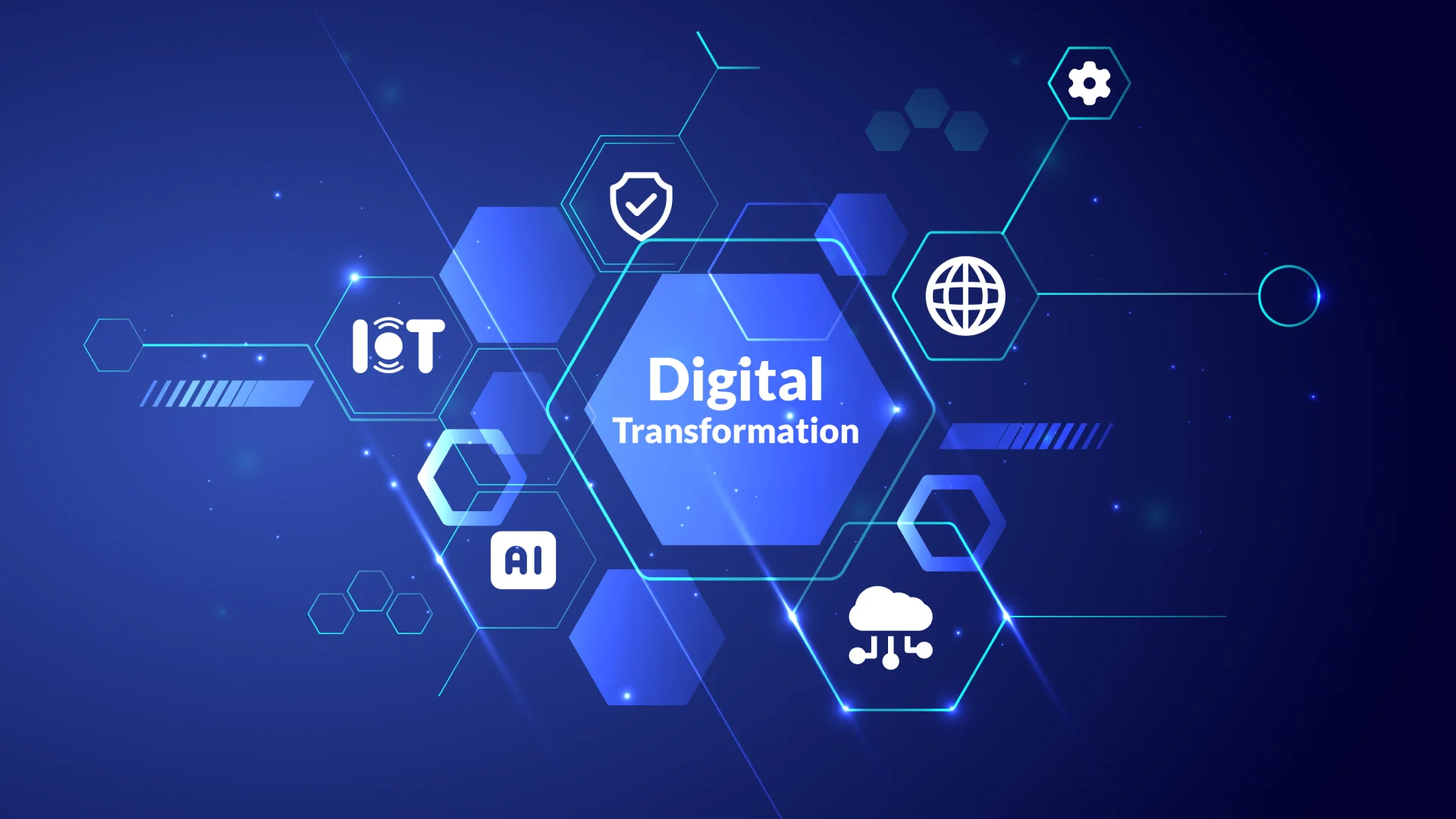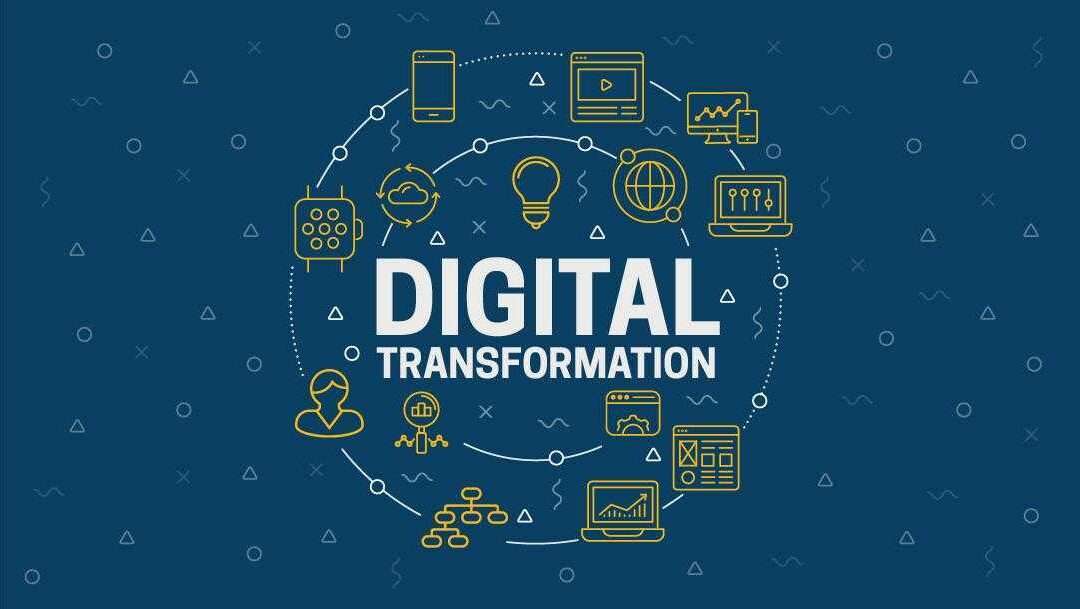5 Key Steps to Successful Digital Transformation for Businesses in 2025

Digital transformation is no longer a buzzword—it’s a crucial step for businesses to survive and thrive in the modern age. As technologies rapidly evolve, companies are expected to keep up with digital tools and strategies to stay competitive. For businesses looking to succeed in 2025 and beyond, embracing digital transformation isn’t just an option; it’s a necessity.
However, the journey of digital transformation can seem overwhelming. From adopting new technologies to reshaping business processes, there’s a lot to consider. In this comprehensive guide, we’ll break down the five key steps to ensure a successful digital transformation journey.
Step 1: Understand the Importance of Digital Transformation
Before diving into digital transformation, it’s important to understand what it truly means for your business. At its core, digital transformation is the integration of technology into every aspect of a company’s operations, strategies, and culture. It’s about using modern technologies like cloud computing, artificial intelligence (AI), and automation to fundamentally change how businesses operate, interact with customers, and create value.
Why Does Digital Transformation Matter?
The world around us is becoming more digital every day. From smartphones to social media to online shopping, businesses must adapt to meet the expectations of tech-savvy consumers. Failing to do so can leave businesses outdated and outpaced by competitors who embrace technology.
Here’s why digital transformation matters:
- Staying competitive: In a world driven by technology, businesses that fail to innovate will struggle to keep up. Companies that embrace digital transformation gain a competitive advantage by offering better products, services, and customer experiences.
- Adapting to changing customer expectations: Customers today expect seamless, fast, and personalized interactions. Digital transformation allows businesses to meet these expectations by delivering quick responses, tailored offerings, and real-time interactions.
- Improving operational efficiency: Technology can automate manual processes, reduce human error, and streamline workflows, which leads to cost savings and better resource allocation. Businesses can use tools like data analytics to make smarter decisions, improving efficiency.
Step 2: Focus on Customer-Centric Digital Transformation
A customer-first approach is essential for successful digital transformation. It’s not enough to implement technology; businesses must integrate digital tools that directly improve the customer experience. In today’s world, digital transformation is largely driven by the demand for better customer service, faster communication, and personalized solutions.
How Does Customer-Centric Digital Transformation Work?
To adopt a customer-centric digital transformation, businesses must focus on understanding and responding to customer needs with technology. Here’s how you can achieve that:
- Personalizing customer experiences: With technologies like AI and data analytics, businesses can gain deep insights into customer preferences, behaviors, and pain points. This allows them to tailor offerings to individual customers, providing a personalized experience that builds trust and loyalty.
- Creating omnichannel experiences: Customers now interact with businesses across multiple platforms—social media, websites, mobile apps, and more. A customer-centric digital transformation ensures that all touchpoints are connected, offering a seamless experience regardless of the platform.
- Faster response times: Customers expect quick responses to inquiries, complaints, and feedback. By implementing AI-powered chatbots, CRM systems, and social media listening tools, businesses can provide real-time customer support, helping to increase satisfaction and retention.
- Improving customer feedback loops: Digital transformation allows businesses to gather and analyze customer feedback in real-time, enabling them to quickly adapt to changing needs and improve the products and services offered.
Benefits of Customer-Centric Digital Transformation:
- Increased customer satisfaction and loyalty
- Higher conversion rates due to personalized offerings
- Faster resolution of issues through automation
- Stronger brand reputation through Digital transformation consistent and personalized service

Step 3: Leverage Cloud Computing for Scalability and Flexibility
Cloud computing has become one of the cornerstones of digital transformation. It enables businesses to scale quickly, improve collaboration, and access a variety of tools and services without having to maintain expensive on-premises infrastructure.
What is Cloud Computing?
Cloud computing is the delivery of computing services—including servers, storage, databases, networking, software, and more—over the internet. By utilizing cloud-based tools, businesses can access advanced technology on-demand and scale their operations more easily.
Why Cloud Computing is Essential for Digital Transformation
- Scalability: With the cloud, businesses can easily scale their infrastructure up or down as needed, ensuring they only pay for what they use. This flexibility is especially important for companies experiencing growth or fluctuating demands.
- Collaboration and remote work: Cloud-based tools, such as Google Workspace and Microsoft 365, allow employees to collaborate in real-time, regardless of location. This has become increasingly important with the rise of remote work and hybrid work environments.
- Cost-efficiency: Cloud computing reduces the need for businesses to invest in expensive on-premises infrastructure, as cloud service providers offer pay-as-you-go models. This helps businesses manage costs while still gaining access to cutting-edge technology.
- Security: With data breaches on the rise, businesses must prioritize security. Cloud providers invest heavily in cybersecurity and offer advanced encryption and protection to keep sensitive data safe.
Key Cloud Computing Benefits:
- Enhanced collaboration and communication
- Reduced operational costs through scalable resources
- Improved disaster recovery capabilities
- Access to the latest technologies and innovations
Step 4: Embrace Automation and Artificial Intelligence (AI)
Incorporating automation and AI into your digital transformation strategy is essential for driving innovation and operational efficiency. These technologies enable businesses to automate repetitive tasks, reduce human error, and make smarter, data-driven decisions.
How Automation and AI Drive Digital Transformation
- Automating repetitive tasks: Automation tools help businesses streamline processes by handling repetitive tasks that would otherwise take up valuable employee time. This allows employees to focus on higher-value activities, like strategy and problem-solving.
- AI-powered analytics: Artificial intelligence can analyze massive amounts of data and generate insights in real time. These insights help businesses make informed decisions about marketing, product development, customer service, and more.
- Enhanced customer service: AI-powered chatbots and virtual assistants can handle customer inquiries instantly, 24/7. By providing fast, accurate responses, businesses improve customer satisfaction while freeing up staff for more complex tasks.
- Improved decision-making: AI tools help businesses identify patterns and trends in data, enabling them to predict market changes and customer preferences. This empowers organizations to make proactive, data-driven decisions.
Benefits of AI and Automation in Digital Transformation:
- Increased productivity and efficiency
- Improved customer experiences through automation
- Reduced operational costs
- Faster decision-making based on real-time data
Step 5: Foster a Digital Culture and Upskill Your Workforce
Digital transformation isn’t just about technology; it’s about changing the mindset and culture of your organization. For digital transformation to succeed, your employees need to embrace new technologies and adapt to the changing business environment.
Also Read: Identifying Relationship Red Flags: What to Watch Out For

Building a Digital Culture
- Investing in training: To maximize the benefits of digital transformation, businesses must upskill their workforce in areas like data analytics, AI, and cloud computing. Regular training programs can help employees become proficient with new tools and technologies.
- Encouraging innovation: Fostering a culture that embraces innovation and experimentation encourages employees to come up with new ideas, which can lead to breakthroughs in products, services, and processes.
- Creating digital leaders: Businesses should identify and develop digital champions within their organization—leaders who can help drive digital initiatives and inspire others to embrace change.
- Collaborative mindset: Digital transformation requires collaboration across all departments. Encouraging cross-functional collaboration ensures that digital strategies are effectively integrated across the entire organization.
Benefits of a Digital Culture:
- Increased employee engagement and satisfaction
- Higher levels of innovation and creativity
- Improved adaptability to changing market conditions
- Better collaboration across teams and departments
Conclusion: Embrace Digital Transformation for Long-Term Success
As we look toward 2025 and beyond, digital transformation is no longer optional—it’s a critical factor for business survival and growth. From enhancing customer experiences to improving operational efficiency, the benefits of digital transformation are clear.
By following the five steps outlined in this article—understanding its importance, focusing on customer needs, leveraging cloud computing, embracing AI and automation, and fostering a digital culture—businesses can successfully navigate the digital landscape and unlock new opportunities for success.
Remember, digital transformation is a continuous journey. Stay agile, embrace change, and invest in the right technologies to stay ahead of the competition. The businesses that adapt to the digital revolution will be the ones that thrive in the future.






One Comment